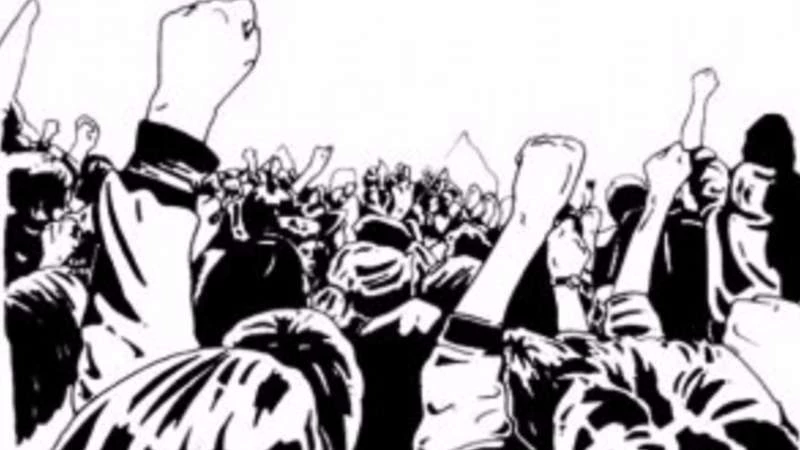Syrians knew that the cost of criticizing Assad or his regime was high.
They were painfully aware of the fact that human rights activists, lawyers, intellectuals, academics and journalists as well as ordinary citizens who dared to speak their minds were housed in Assad’s prisons.
But these detainees that the regime was refusing to release were their children and what parent would not be willing to sacrifice his own well-being for the sake of his children?
When the fathers of the detained boys had gone to the police station requesting to see their sons, their requests had been denied.
When they requested an audience with the head of local intelligence, a meeting was arranged, but his response made them more determined than ever that they would not cower in fear before the regime as Assad desired them to.
Demonstrations in front of the local police station had already resulted in clashes between security officers and civilians frustrated and angered by the arrogant mocking they had received in return for their demands for the release of their sons.
By March 17 the parents of the boys and some of the city’s elders had exhausted every effort to have their sons released and each time they had come up empty.
The matter before them had grown into something that went far beyond simply wanting the boys to be allowed to go home.
Inspired by what they viewed as the success of uprisings in the Arab Spring countries, the people of Daraa had begun to set their sights on freedom and democracy in exchange for the brutal oppression and corruption they were forced to live with under Assad.
As they discussed the next step that needed to be taken on Thursday, March 17, organizers decided that a demonstration would be held the following day after Friday prayer.
The next day, the regime forces reacted by killing and injuring many protesters, as they were heavy-handed from the beginning. They didn’t try to issue any warnings. They didn’t use tear gas or water cannon. They fired at the peaceful demonstrators from the start.”
By March 17 Assad had also already begun the process of spinning his own alternate version of the facts that would end up becoming a tangled web of propaganda, conspiracy theories and outright lies.
Within weeks Michel Chossudovsky, a pro-Putin conspiracy theorist of Russian descent, would catch the ball that Assad’s media outlets had already tossed into the air and then run with it.
“There is evidence of gross media manipulation and falsification from the outset of the protest movement in southern Syria on March 17th,” Chossudovsky would write in an article titled; “SYRIA: Who is behind the protest movement? Fabricating a pretext for a US-NATO ‘humanitarian Intervention’.”
“What is clear from these initial reports is that many of the demonstrators were not demonstrators, but terrorists involved in premeditated acts of killing and arson,” Chossudovsky went on to say.
But those who were there know the true story and that the real terrorists in Daraa in the spring of 2011 were those who deliberately tortured children and shot unarmed civilians in the name of Assad.
And the mountain of evidence proving that Assad regime is the ultimate source of all terrorism in Syria continues to grow.



التعليقات (0)